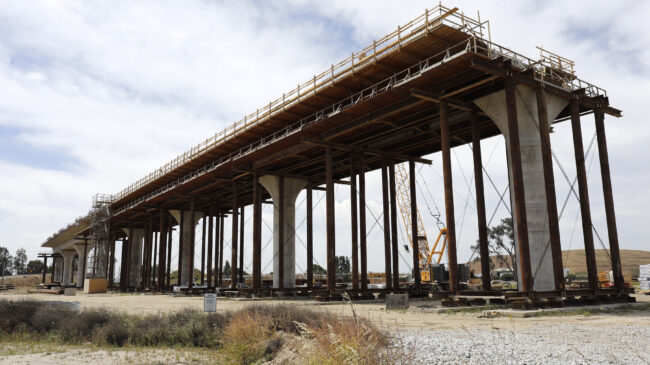As President Joe Biden and Congressional Democrats push ambitious infrastructure plans, they’re also aiming to rectify the impact previous construction programs have had on minority communities.
They aspire to choose new transportation infrastructure projects with an eye toward minimizing disruption to communities of color. While concerns over neighborhood-destroying transportation projects typically focus on freeways, it turns out that the California high-speed rail plan shares this very same problem.
The Biden administration’s infrastructure proposal includes “$20 billion for a new program that will reconnect neighborhoods cut off by historic investments and ensure new projects increase opportunity, advance racial equity and environmental justice, and promote affordable access.”
Similarly, Sen. Tom Carper, D-Delaware, proposed a grant program to help communities of color mitigate the impact of “infrastructural barriers,” with the hope of reconnecting neighborhoods.
Concerns over the effects of infrastructure construction on disadvantaged neighborhoods emerged after the freeway construction boom in the 20th century. The poster child for this problem was the Cross Bronx Expressway, a segment of I-95 built by controversial New York planner Robert Moses. Although the freeway improved connections between the city and northern and western suburbs, it bisected ethnic communities. The project is often blamed for creating one of America’s notorious ghettos in the South Bronx, which was largely destroyed by fires in the 1970s.
Similar stories played out elsewhere in several parts of the country, including California. In Los Angeles, construction of the Santa Monica Freeway in 1963 essentially wiped out Sugar Hill, a neighborhood that had attracted African Americans during the preceding decades. A few years earlier, the Santa Ana Freeway bisected Boyle Heights, a neighborhood with a relatively high concentration of Mexican Americans.
Today, another type of infrastructure project is disrupting and threatening the state’s communities of color: the California high-speed rail system. In a recent letter to the California High-Speed Rail Authority, Congressman David Valadao, R-Hanford, called on the authority to address problems caused by its tracks running through the center of Wasco, a city with a predominantly Latino and low-income population.
The rail route forced the abandonment of Wasco’s farm labor housing complex. Although the rail authority contributed to the construction costs of new farmworker housing, it did not provide money to demolish the old complex, which has been heavily vandalized and has become a magnet for gang activity. Paying for the demolition is now a point of contention between Wasco and the rail authority.
“These are impacts that have sent ripples through our community and we need them to be held accountable and responsible for what they’ve done by choosing to build through Wasco,” said Alex Garcia, mayor of Wasco.
High-speed rail construction has also caused disruptions in Fresno, the largest city on the rail system’s initial operating segment, and one with large Latino and low-income populations. Several buildings around downtown—including a rescue mission—were forced to close and some of the abandoned buildings were set on fire by arsonists.
If the high-speed rail system ever extends beyond its initial operating segment, other communities will be impacted. Tehachapi officials, for example, already expressed concerns over noise and vibrations impacting a hospital and residential subdivision if high-speed rail begins operating along its currently-planned route.
With so much vacant land in California, one might think a high-speed rail line could be built without so much disruption. But bullet train tracks must avoid sharp turns and abrupt elevation changes so routing options are more limited than it might appear. Additionally, planners’ desire to provide stations at intermediate cities like Madera and Bakersfield means that lines must traverse multiple urban areas in the Central Valley. If the system ever makes its way to Southern California and the Bay Area, the land and community impacts will increase dramatically.
As the Biden administration and urban planners revisit the influence transportation construction has had on minority neighborhoods, they should also take seriously the similar problems the California high-speed rail system is creating today.
A version of this column first appeared in the Los Angeles Daily News.

